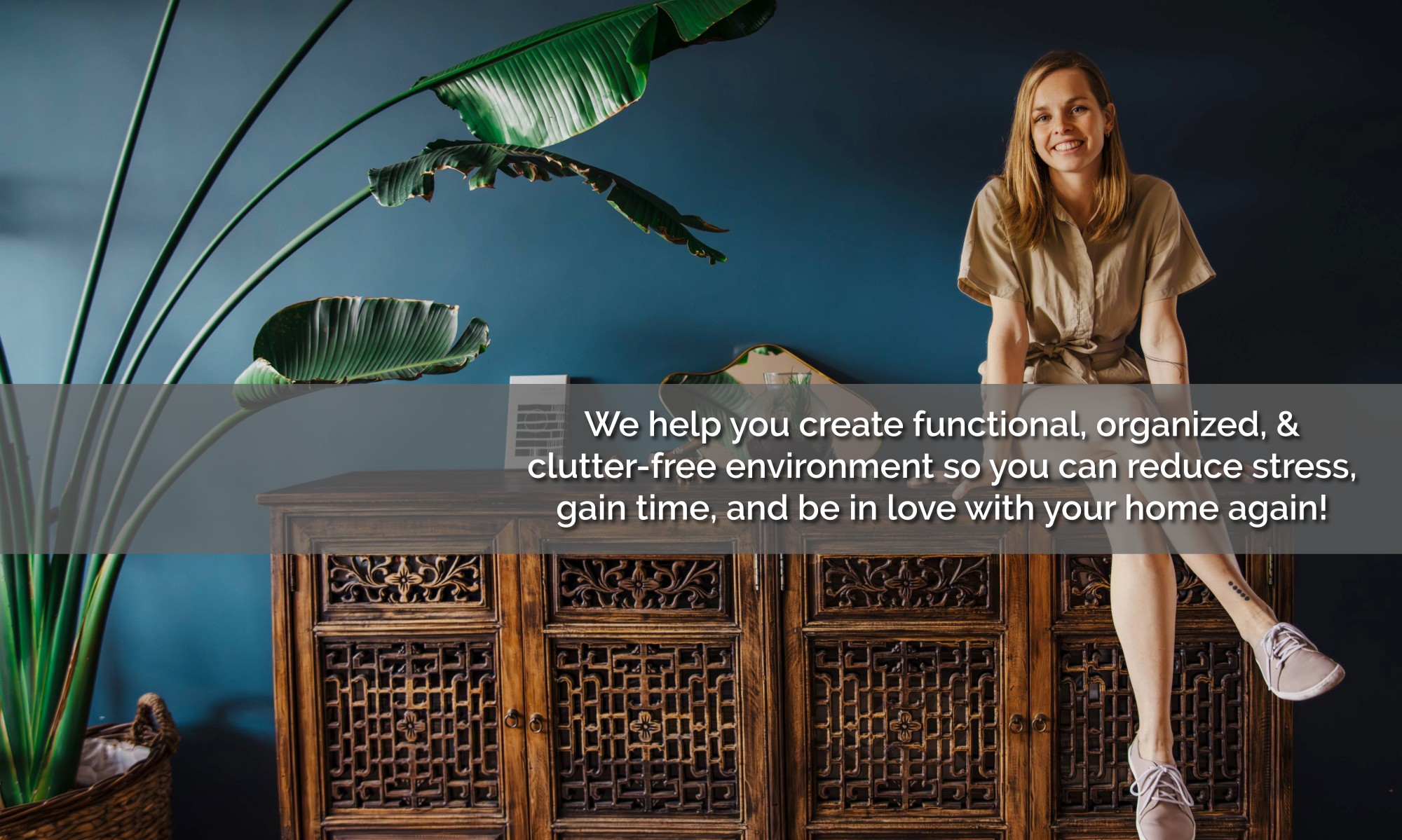
For years, I used to spend 40mins EVERY EVENING tidying up toys! I was an au-pair, so I just thought of it as a part of my work, but I wondered how it must be for parents without daily help to split themselves between family time, work, and all the household chores. Especially if their kids have a lot of toys…
As the kids grew older, I knew it was important to educate them on how to tidy up after themselves. I had to find out what would motivate them: With trial and error, I kept re-organizing their playrooms and exercising different negotiation strategies. Some with more, some with less success.
Eventually, I saw that having fewer toys makes a huge difference in the tidying-up process while not at all decreasing fun and play for the kids! My decluttering path had slowly started back there. That was five years ago, and ever since, I have practiced the skill of reducing possessions with other people until it became my full-time job.
Undoubtedly freeing as decluttering is, there always lingers the question,
“HOW DO I GET MY KIDS TO KEEP THEIR PLAYROOM THIS TIDY?!?!”
Not only from my work with the kids but also by observing dozens of parents facing this dilemma, I noticed one clear pattern: WE LACK THE KIDS’ PERSPECTIVE.
Through my playful au-pair eyes, I had the chance to find my answers to this. Remembering what is important to kids, I discovered five main objections we should consider. And this is how I overcome them to bridge the gap between kids and adults when organizing playrooms.
I. “It is too much work!”
Big tasks aren’t the strongest point for kids and their shorter attention span. If they pull out piles of toys, it will be way too overwhelming to tidy them afterward.
I can’t stress enough that the minimalist and Montessori approaches of “Less is More” are righteous here: The fewer toys, less clutter, and less visual noise, the more you simplify the whole process of tidying.
You may choose to either reduce the number of toys you own (I have written an article on decluttering with kids just a few weeks ago) or introduce a rotation system.
II. “It is too hard!”
The #1 mistake I see in most playrooms organization is inaccessibility & difficulty. Remember: if it is difficult or impossible for the kid to tidy up, he won’t do it. Avoid complex or fiddly organization at all times if you want to get this right!
1) Ensure furniture and toys are at the right height for kids to access.
2) Avoid anything fiddly: Remove complicated molds from game boxes that don’t need them, and avoid having toys that need to be completed before tidying (such as open puzzles or jigsaws)
3) Don’t overfill their toy storage: You might fit everything in with some effort and time, but your kid won’t. Leave enough space, so it is EASY to put things back!
4) Avoid obstructions: That extra move and effort your kid will have to execute to move things around to get to the correct storage will decrease the chances of success.
= The 0 effort strategy: Open shelves or baskets that aren’t overfilled, clearly defined “homes” for things, and no extra effort is your way to win!
III. “It is my best game.”
I remember the sad faces at the end of the day when we said we must break down the forts we created. Kids are excited about their games and often care about the idea of resuming their building or play projects the next day. To not create resistance or aversion to tidying up, it is important to compromise a bit.
I suggest creating a designated space (in a corner, in a play tent, on a play table, etc.) for their open projects to leave their toys ready until the next day safely. One open project policy and a certain total time limit will help you manage this: E.g., you keep only this LEGO battle project out and tidy it up after a week.
IV. “Why do I have to do it?”
Kids don’t have the same natural incentive to have a tidy room. Instead of just motivating them by what you want/need from them, explain the benefits.
1) Tidy playroom where all toys have their home is a ready playroom. “You can find your toy in no time and play right away when you come home from school!”
2) Respecting other people – I noticed kids understand when you say, “The cleaner needs to mop the floor. Could you help him by putting your toys away?” Having a regular cleaning day in their room holds them accountable to have their room completely tidied on that day (usually once a week), plus it teaches them respect towards other people’s needs.
V. “I still want to have fun.”
After a play session, tidying up might seem very boring. Make tidying up fun and something not to be resisted with some of these tips:
1) Keep it short: Put a timer to 5-10mins each day to make it an easy and fast routine.
2) Offer your presence or helping hand: having someone around keeps kids more focused and motivated and holds them accountable to finish the task.
3) Gamify it: Choose a song that will lift the mood, make it a race (how many toys can you tidy in 5 minutes?), or play the “putting toys to sleep”.
What strategies do you use to overcome your kids’ objections?
Do you need more PERSONALIZED TIPS AND SOLUTIONS FOR YOUR PARTICULAR SITUATION?
I offer virtual organizing sessions 1:1!
Check out how it works and sign up for a free call if you want tailored guidance, and accountability for your next home organizing or decluttering project!

